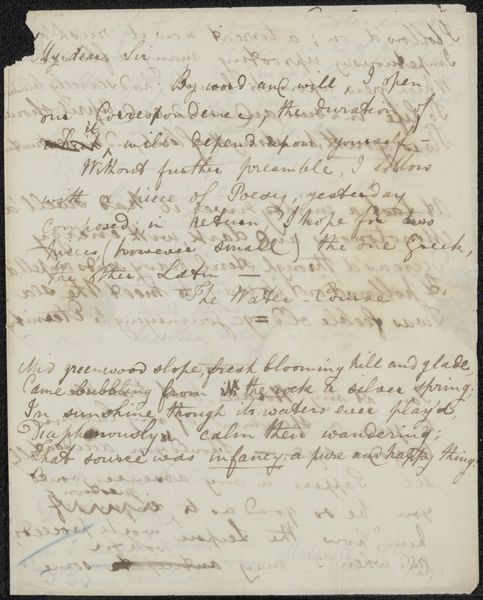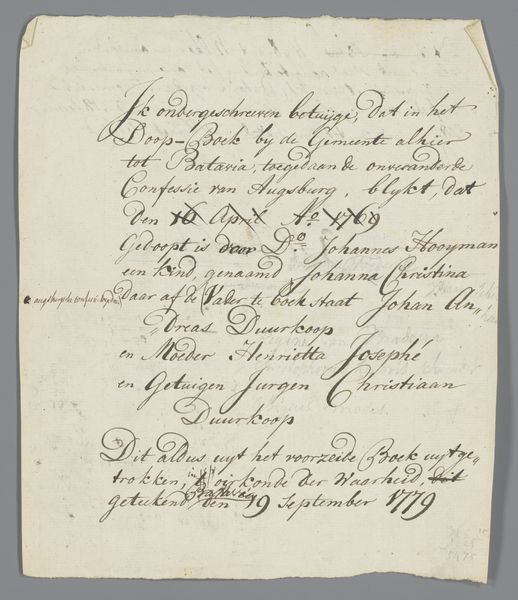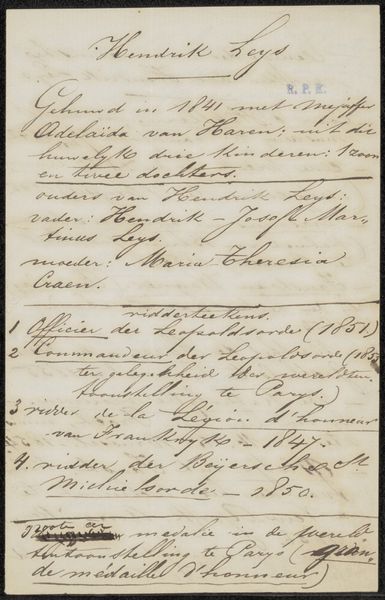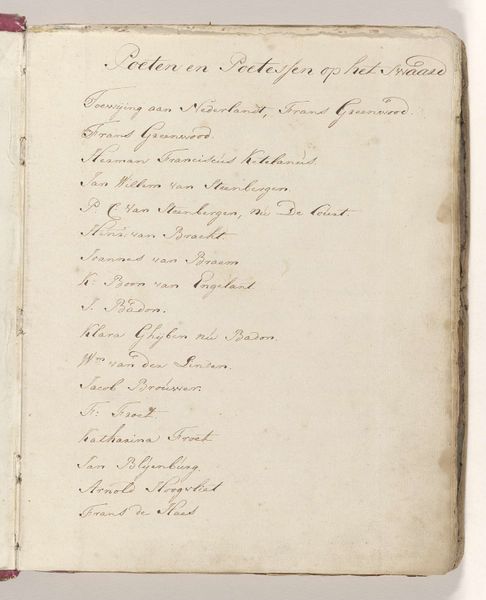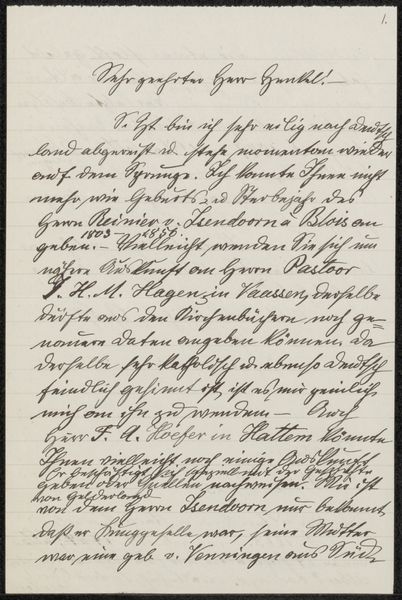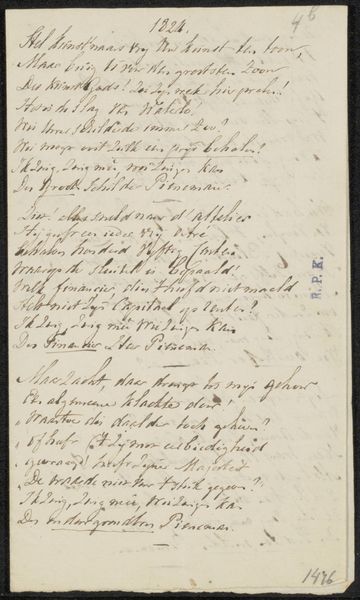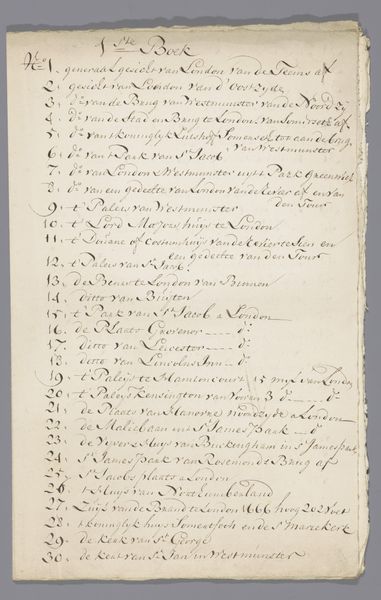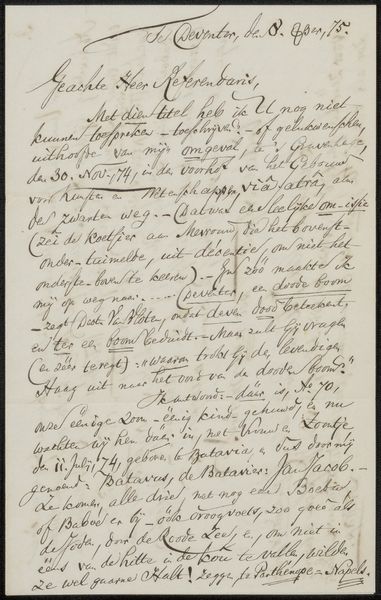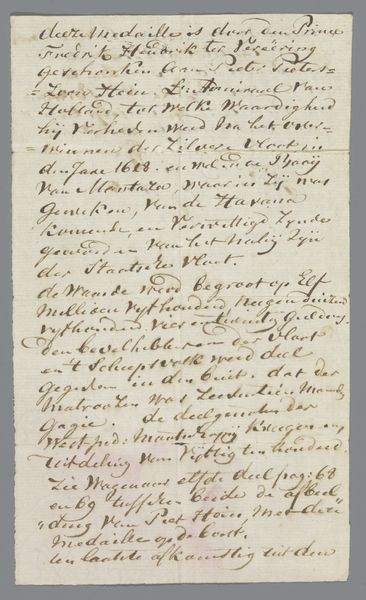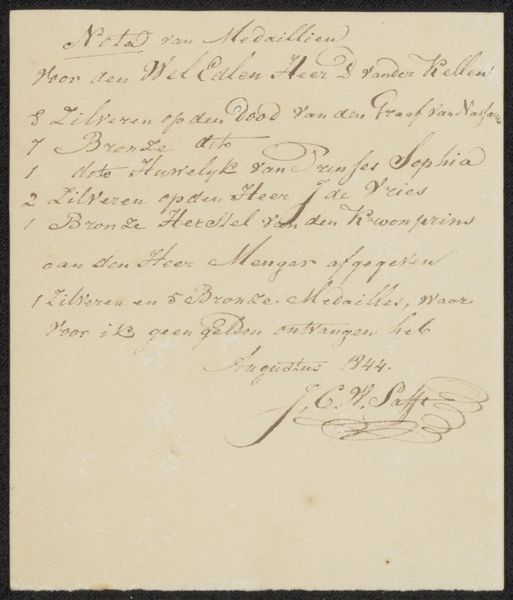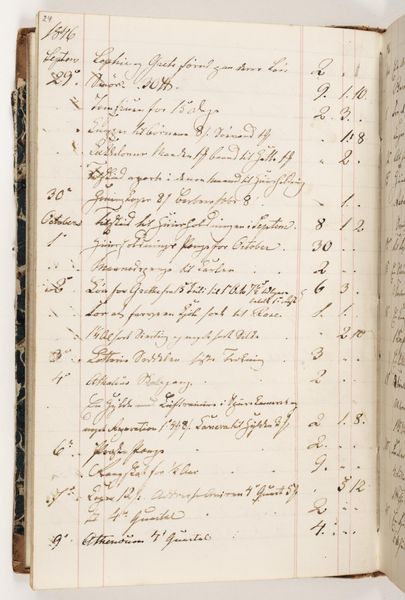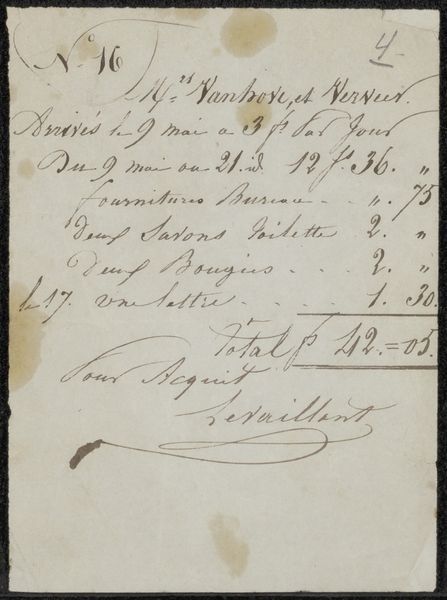
drawing, paper, ink
#
portrait
#
drawing
#
paper
#
ink
#
genre-painting
#
calligraphy
Copyright: Rijks Museum: Open Domain
Curator: My first impression? I feel a strange peace in this list of names, penned with such deliberate strokes. There's a solemn rhythm here, a meditation on presence and absence, isn’t it? Editor: Indeed. What we have here is an anonymous document dating to before 1758. It's a manuscript concerning Christina Sibilla Bakhuysen-Moll, executed in ink on paper, which suggests a record of attendees related to some genre painting, perhaps some registry of prominent figures of that era, all observed through beautiful calligraphy. Curator: The calligraphy *is* arresting! Notice how the strokes both connect and separate, like individual lives intertwined but still distinct. Each loop and flourish speaks volumes about the writer’s care and attention, transforming a simple list into something almost… lyrical. But what does this say about societal dynamics at play in the moment? Editor: Good question. Given its bureaucratic look and clear listing of names, it’s likely related to municipal record-keeping. Notice that there are different strata that can be clearly identified. It's tempting to read the clear, elegant script itself as an assertion of power, almost an attempt to impose order and decorum onto the messy reality of death and grieving, I should think. Curator: Or maybe, dare I suggest, there's a softer motivation? Consider the meticulous detail—it’s like a loving act of preservation, trying to hold onto fleeting memories and identities through the permanence of ink. But that still doesn't negate what these records may reveal when we come across them in museum exhibitions and catalogs today, doesn't it? Editor: Agreed! And beyond its aesthetic or emotional pull, this work, like many documents, reminds us of the constructed nature of history itself, and our biases involved in preserving some records and voices more than others, I may suggest. Curator: Looking at this now, I think you're absolutely right. Editor: It does remind us to question whose stories are told, whose are omitted, and how art itself can be complicit. Thanks for guiding us through such rich work.
Comments
No comments
Be the first to comment and join the conversation on the ultimate creative platform.
